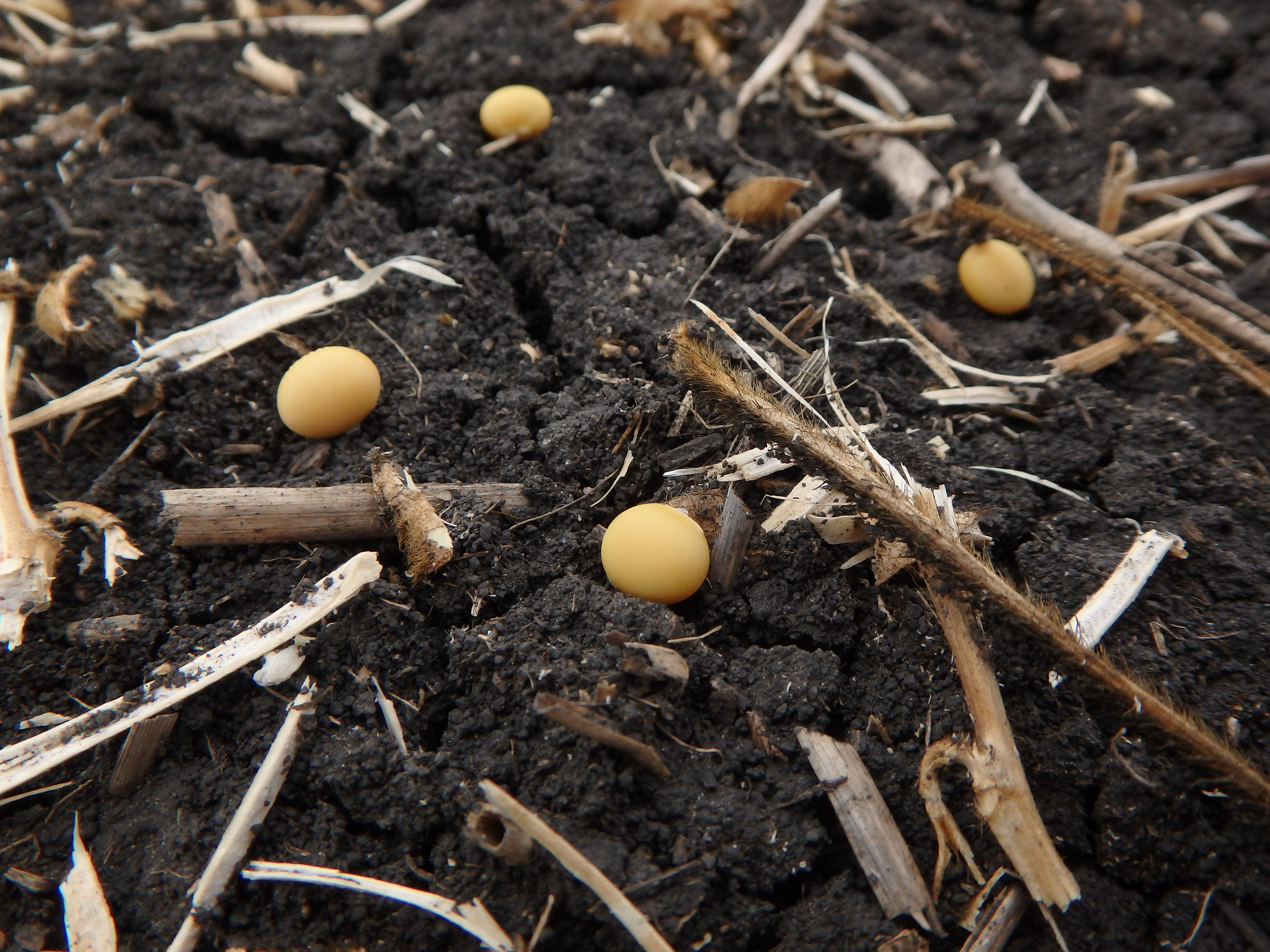It is estimated that 80% of soybean harvest losses occur at the header, rather than out the back of the combine. Yield losses at harvest that go unnoticed can add up and have a significant impact on net return.
There are four main types of header losses to watch for:
- Dropped pods – severed pods that did not feed into the combine
- Loose seeds – seeds that fell from shattered pods due to impact against the cutter bar or other parts of the header
- Cut stubble – pods that remain attached to cut stubble
- Lodged stalks – stalks that were not severed by the cutter bar due to lodging
Periodically assess seed loss from the combine during harvest. As a rule of thumb, 4 soybeans/ft2 equates to 1 bu/ac of yield loss. For more accurate assessment, the Bean App Harvest Loss Assessor has been created to easily calculate soybean yield loss based on the number of seeds on the ground and the approximate soybean seed size.
Determining your level of yield loss will indicate whether combine settings and harvest practices need to be adjusted. If adjustments are needed, make changes gradually and continue assessing seed loss to determine what changes work best. Aim to keep harvest yield loss below 5%.
Research Results
Research on harvest speed, header type and harvest angle has been conducted by the Prairie Agricultural Machinery Institute (PAMI) to assess soybean harvest efficiency in Manitoba.
Combine Speed
The first part of this research tested combine speeds of 2, 3, 4 and 5 mph. Results showed that soybean header losses were low when the combine was kept at 2, 3 and 4 mph (Figure 1). However, a combine travelling at 5 mph produced losses that were nearly 40% (0.69 to 0.82 bu/ac) greater than all other speeds (Figure 1).
Slowing down the combine may cost you more time, but it can put more seed in the bin and save you money. Assuming a soybean grain price of $10/bu, revenue loss was $8.20/ac at 5 mph compared to the slowest combine speed. Reduced harvest speed also allows the cutter bar to run closer to the ground more safely, reducing stubble losses.

Header Type
The second part of this research tested auger vs. draper headers, each with and without an air reel. In summary, both header types equipped with an air system reduced harvest losses. However, the draper header also outperformed the auger header.
For the auger header specifically, soybean harvest loss was reduced by 55% when the auger header was equipped with an air reel vs. the auger header without an air reel (difference of 1.25 bu/ac) (Figure 2). Full draper header results to come.


Harvest Angle
Another study included two different soybean varieties (Dekalb 23-60RY and 24-10RY) that were harvested at 0° and 45° angles to the rows, using a draper header.
There was no conclusive evidence from this study that soybean harvest losses were reduced by combining at a 45° angle compared to a 0° angle. However, harvesting at an angle distributes the cutting load across the entire header. In-line harvesting (0° angle) can increase wear on the cutter bar knives by heavily loading knife sections and under-utilizing combine capacity.


